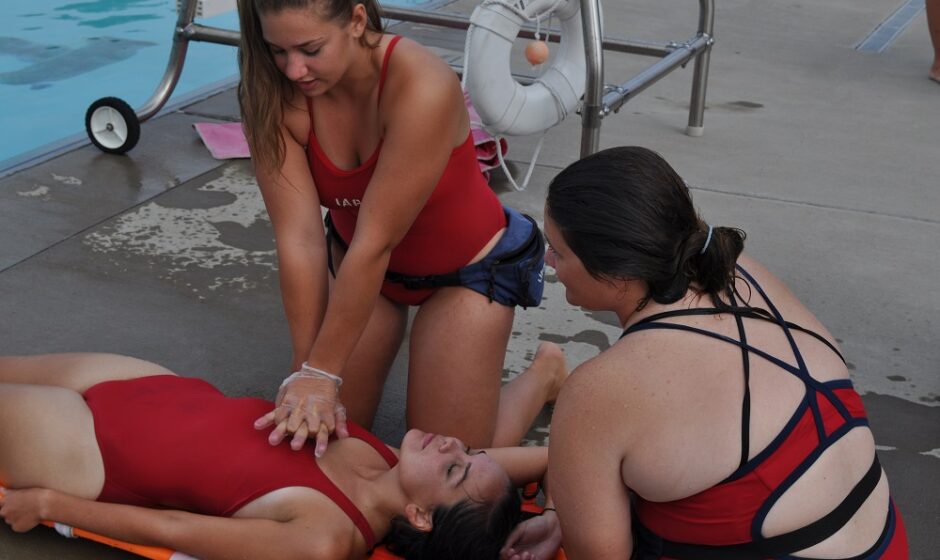Becoming a lifeguard is a noble and rewarding profession, focused on safeguarding lives and ensuring the well-being of swimmers and beachgoers. If you’re considering a career in lifeguarding or want to enhance your lifesaving skills, enrolling in a comprehensive lifeguard class is the essential first step. This article delves into what a lifeguard class involves, the benefits of becoming a certified lifeguard, and why the American Lifeguard Association (ALA) offers one of the best programs available.
What Is a Lifeguard Class?
A lifeguard class is a structured training program designed to equip individuals with the knowledge and skills to prevent and respond to aquatic emergencies. This course generally covers vital skills such as water rescue techniques, CPR (Cardiopulmonary Resuscitation), first aid, and the principles of personal and public safety. Lifeguard classes are often led by experienced instructors who guide participants through practical and theoretical lessons, ensuring they’re prepared to act confidently in emergency situations.
Key Components of a Lifeguard Class
A comprehensive lifeguard class, especially one certified by a reputable organization like the American Lifeguard Association, typically includes the following components:
-
Water Rescue Techniques
Training in water rescue skills is at the core of lifeguard training. Participants learn how to approach distressed swimmers safely, utilize rescue equipment effectively, and perform water extrication. -
First Aid and CPR Certification
Lifeguards are trained to perform CPR and administer first aid in emergencies. These skills are critical for stabilizing individuals before paramedics arrive. CPR certification, in particular, is often a mandatory requirement for most lifeguard positions. -
Emergency Preparedness and Response
Lifeguards are taught to assess and respond to emergency situations swiftly. This includes recognizing signs of distress, activating emergency protocols, and coordinating with other lifeguards or emergency responders. -
Swimming Proficiency
A high level of swimming proficiency is expected from lifeguards. Lifeguard classes often include swim tests to ensure that participants can swim various strokes, handle long distances, and perform underwater rescues. -
Legal and Ethical Responsibilities
Lifeguards must understand their responsibilities to the public, including legal and ethical considerations related to their role. Classes cover issues like consent, liability, and the importance of acting professionally at all times.
The Benefits of Taking a Lifeguard Class
Pursuing lifeguard training opens up several rewarding opportunities, both personally and professionally:
- In-Demand Job Skills: Lifeguards are in high demand, especially during summer months or in areas with a high volume of recreational swimmers. Obtaining lifeguard certification makes you a strong candidate for various employment opportunities in pools, beaches, and waterparks.
- Life-Saving Knowledge: Being able to save lives is one of the most powerful skills a person can have. By completing a lifeguard class, you gain the ability to make a real difference in life-threatening situations.
- Physical Fitness: Lifeguard training is physically demanding, helping participants improve their fitness levels through swimming and rescue drills.
- Personal Confidence and Leadership Skills: Lifeguards often need to take charge in high-stress situations, requiring strong communication and decision-making abilities. Training enhances these qualities, empowering individuals to act calmly under pressure.
Why Choose the American Lifeguard Association (ALA)?
The American Lifeguard Association (ALA) is recognized for its commitment to safety, quality training, and excellent instructors. Choosing a lifeguard class with the ALA offers several advantages:
-
Nationally Recognized Certification
The ALA provides certification that is recognized across the United States. Many employers, from local pools to national parks, trust ALA-certified lifeguards due to the organization’s rigorous standards and comprehensive training programs. -
Flexible Training Options
Understanding the varied needs of learners, the ALA offers multiple training formats, including in-person, blended, and online courses. This flexibility makes it easier for participants to fit their training into their schedules. -
Experienced Instructors
ALA courses are led by highly experienced instructors who are not only certified but have real-world experience in lifeguarding. This allows students to learn from the best and gain insights into the profession beyond textbook lessons. -
Comprehensive Curriculum
The ALA covers all essential aspects of lifeguarding, from technical skills to emergency response and first aid. ALA courses are designed to go beyond the basics, helping participants become well-rounded lifeguards equipped to handle any situation. -
Ongoing Support and Resources
After completing their certification, ALA members have access to valuable resources for continuing education, recertification courses, and updates on safety standards. This commitment to ongoing education ensures that lifeguards can maintain their skills and stay informed about industry advancements.
Steps to Enroll in a Lifeguard Class
Enrolling in a lifeguard class is straightforward. Follow these steps to begin your journey with the ALA:
-
Check Prerequisites
Many lifeguard classes have basic prerequisites, such as being at least 15 years old, possessing strong swimming skills, and being physically fit. Check the ALA’s specific requirements for the class you’re interested in. -
Choose Your Training Format
Select the training format that works best for you. If you prefer hands-on learning, in-person classes are ideal. Alternatively, the ALA’s blended and online formats allow for more flexible study. -
Register for the Class
Visit the American Lifeguard Association’s website to register for your chosen course. The ALA’s streamlined online registration process makes it easy to sign up. -
Complete the Course and Certification Exams
After completing the training, you’ll need to pass written and practical exams to become certified. The ALA’s instructors provide thorough guidance to help students succeed. -
Recertification
Lifeguard certifications are generally valid for two years. To keep your skills sharp and certification up to date, consider enrolling in a recertification class when your certification is nearing expiration.
Lifeguard Class FAQs
-
How long does a lifeguard class take?
Lifeguard classes can range from a few days to several weeks, depending on the format and intensity of the course. The ALA offers various options to fit different schedules. -
What happens if I fail the certification exam?
If you don’t pass on the first try, many ALA programs allow retakes. The instructors will work with you to address any areas needing improvement. -
Is a lifeguard class physically demanding?
Yes, lifeguard training is physically intensive, involving rigorous swimming and rescue drills. However, most classes are structured to help students build up their endurance gradually.
Conclusion
Enrolling in a lifeguard class is a significant commitment that comes with numerous benefits. Not only will you gain essential lifesaving skills, but you’ll also open doors to an in-demand career with potential for personal growth and development. With a program by the American Lifeguard Association, you’ll receive nationally recognized certification, top-notch training, and the confidence to handle emergencies effectively.
Start your journey today by choosing a lifeguard class through the ALA. Whether you aim to work at a local pool or on a busy beach, ALA’s comprehensive training will equip you with the skills and knowledge to make a real difference.




